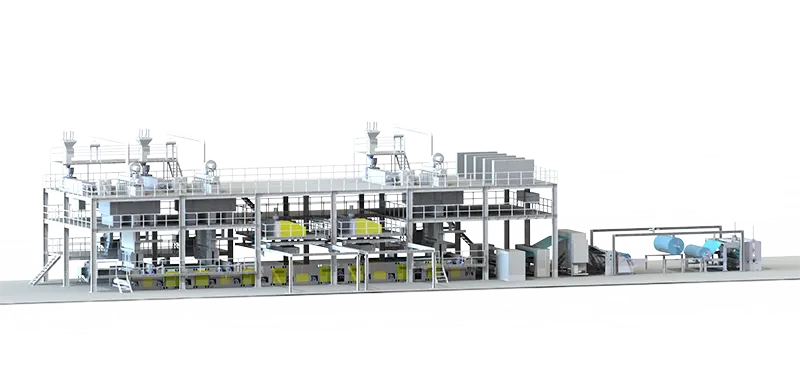Comparing the environmental footprint of nonwoven fabric making machines to traditional fabric production methods involves considering various factors throughout the entire lifecycle of both processes. Here’s a comparison:
- Raw Material Usage:
- Nonwoven fabric making machines typically use synthetic materials like polypropylene (PP), polyester (PET), or polyethylene (PE) as raw materials. These materials are derived from fossil fuels and are not biodegradable. Traditional fabric production methods may use natural fibers like cotton, wool, or silk, which are renewable and biodegradable.
- Impact: Nonwoven fabric making machines have a higher environmental impact in terms of raw material usage due to the reliance on synthetic materials derived from non-renewable resources.
- Energy Consumption:
- Nonwoven fabric making machines require significant energy for heating, extrusion, spinning, bonding, and other manufacturing processes. Traditional fabric production methods may also require energy for spinning, weaving, knitting, dyeing, and finishing processes.
- Impact: The energy consumption of nonwoven fabric making machines can be high, especially for processes like meltblowing or spunbonding. However, energy-efficient technologies and renewable energy sources can mitigate this impact to some extent.
- Water Usage:
- Nonwoven fabric making machines generally require less water compared to traditional fabric production methods, which often involve extensive washing, rinsing, and dyeing processes.
- Impact: Nonwoven fabric making machines have a lower environmental impact in terms of water usage, nonwoven fabric making machine contributing to water conservation and reduced wastewater generation.
- Chemical Usage:
- Both nonwoven fabric making machines and traditional fabric production methods may involve the use of chemicals for fiber treatment, dyeing, finishing, and other processes. However, traditional fabric production methods may require more chemicals, including dyes, bleaches, and finishing agents.
- Impact: Nonwoven fabric making machines may have a lower environmental impact in terms of chemical usage, reducing pollution and the release of hazardous substances into the environment.
- Waste Generation:
- Nonwoven fabric making machines can generate waste in the form of trimmings, offcuts, and rejected products. Traditional fabric production methods may also generate waste, including yarn waste, fabric scraps, and wastewater.
- Impact: Both nonwoven fabric making machines and traditional fabric production methods contribute to waste generation. However, nonwoven fabric making machines may produce less waste overall, especially if recycling and waste minimization measures are implemented.
Overall, while nonwoven fabric making machines may have certain environmental advantages over traditional fabric production methods in terms of water usage, chemical usage, and waste generation, they also have significant impacts in terms of raw material usage and energy consumption. Implementing sustainable practices, such as using recycled materials, optimizing energy efficiency, reducing chemical usage, and minimizing waste generation, can help mitigate the environmental footprint of both nonwoven fabric making machines and traditional fabric production methods.
